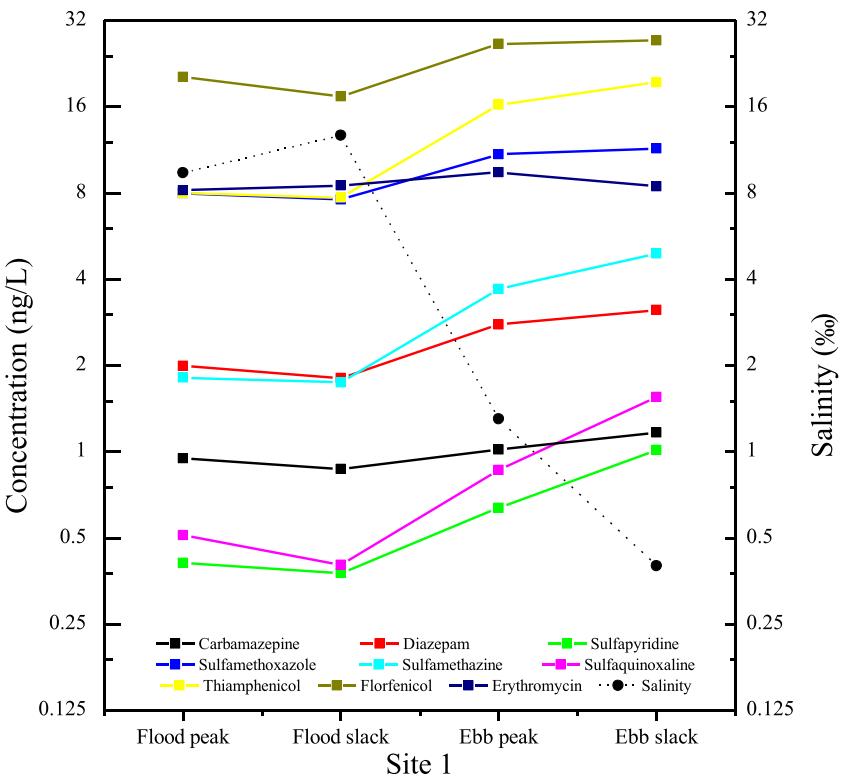Tidal impact on the dynamic behavior of dissolved pharmaceuticals in the Yangtze Estuary, China
The dynamic behavior of 24 dissolved pharmaceuticals over tidal cycles in the Yangtze Estuary, Chinawas studied to assess the tidal impact on the fate of pharmaceutical residues. The results show that most pharmaceuticals were frequently detected with concentrations from below detection to 27.2 ng/L, with sulfamethoxazole, sulfamethazine, erythromycin, thiamphenicol and florfenicol dominating. During tidal cycles, pharmaceutical concentrations decreased during tidal rise, then increasing during tidal receding for all locations, except at site S2 which showed an opposite trend due to unique watermovement there. Itwas observed thatmost compounds showed a non-conservative behavior, while diazepam and sulfamethoxazole displayed a conservative behavior. The pharmaceutical concentrations were found to increase with dissolved organic carbon (DOC) concentration, suggesting DOC as a carrier of pharmaceuticals. In addition,many compounds showed a significant negative relationship with suspended particulate matter (SPM) concentration, indicating SPM–water interactions as a control of pharmaceutical behavior in estuarine environment.
The dynamic change of pharmaceutical concentrations in the Yangtze Estuary during tidal cycles
List of relate results:
-
Science of the total environment ,
2015 ,
536
: 946-954

